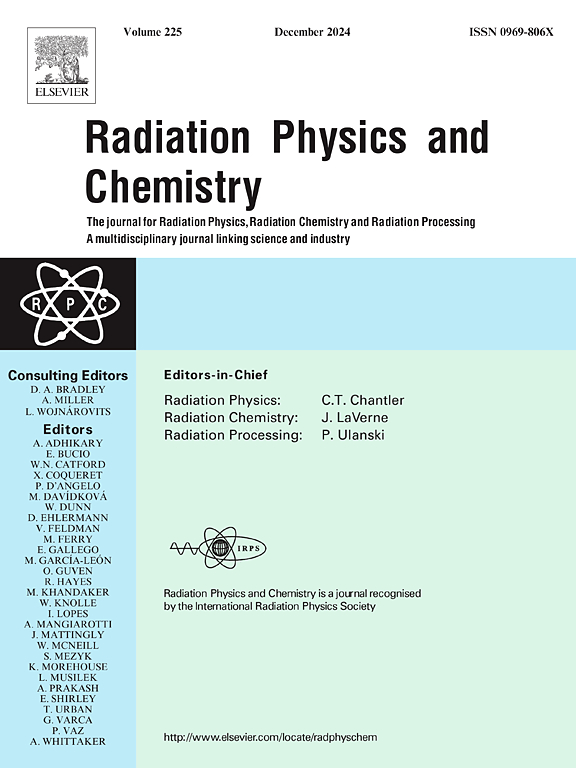利用《全面禁止核试验条约》的数据绘制亚太地区铯-137的空中分布图
IF 2.8
3区 物理与天体物理
Q3 CHEMISTRY, PHYSICAL
引用次数: 0
摘要
最近的全球事件,如朝鲜核试验和福岛核事故,加剧了人们对放射性物质扩散到大气中的担忧。本研究绘制了空气中铯-137在亚太地区的扩散图,重点关注其对马来西亚环境的影响。Cs-137浓度数据来自全面禁止核试验条约组织放射性核素在线数据库,涵盖2009年至2023年的东北和西南季风季节。这些数据来自亚太地区、中亚(中国)和澳大利亚的12个国际监测系统站点,使用ArcGIS Pro软件进行分析,绘制了Cs-137在选定年份的每个季节的传播地图。这些地图显示了Cs-137随时间的大气分布,2011年3月,在福岛核灾难发生后,日本JPP38站的最高浓度为2985 μBq/m3。总体上,色散在区域内呈向外分布,但随着年份接近2023年,色散逐渐减小,恢复到500 μBq/m3以下的极低浓度。本文章由计算机程序翻译,如有差异,请以英文原文为准。
Mapping the airborne distribution of caesium-137 in the Asia-Pacific region using data from the Comprehensive Nuclear Test-Ban Treaty
Recent global events, such as North Korea's nuclear tests and the Fukushima nuclear accident, have heightened concerns about the dispersion of radioactive materials into the atmosphere. This study maps the dispersion of airborne Cs-137 in the Asia-Pacific region, with a focus on its impact on the Malaysian environment. Cs-137 concentration data were collected from the Comprehensive Nuclear-Test-Ban Treaty Organization radionuclide online database, covering the Northeast and Southwest Monsoon seasons from 2009 to 2023. The data, sourced from 12 International Monitoring System stations across the Asia-Pacific, Central Asia (China), and Australia, were analyzed using ArcGIS Pro software to create maps illustrating the spread of Cs-137 for each season of the selected years. The maps reveal the atmospheric distribution of Cs-137 over time, with the highest concentration recorded at 2985 μBq/m3 at Japan's JPP38 station in March 2011, following the Fukushima nuclear disaster. Generally, the dispersion shows an outward pattern within the region, but it gradually diminishes, returning to a very low concentration of less than 500 μBq/m3 as the years approach 2023.
求助全文
通过发布文献求助,成功后即可免费获取论文全文。
去求助
来源期刊

Radiation Physics and Chemistry
化学-核科学技术
CiteScore
5.60
自引率
17.20%
发文量
574
审稿时长
12 weeks
期刊介绍:
Radiation Physics and Chemistry is a multidisciplinary journal that provides a medium for publication of substantial and original papers, reviews, and short communications which focus on research and developments involving ionizing radiation in radiation physics, radiation chemistry and radiation processing.
The journal aims to publish papers with significance to an international audience, containing substantial novelty and scientific impact. The Editors reserve the rights to reject, with or without external review, papers that do not meet these criteria. This could include papers that are very similar to previous publications, only with changed target substrates, employed materials, analyzed sites and experimental methods, report results without presenting new insights and/or hypothesis testing, or do not focus on the radiation effects.
 求助内容:
求助内容: 应助结果提醒方式:
应助结果提醒方式:


